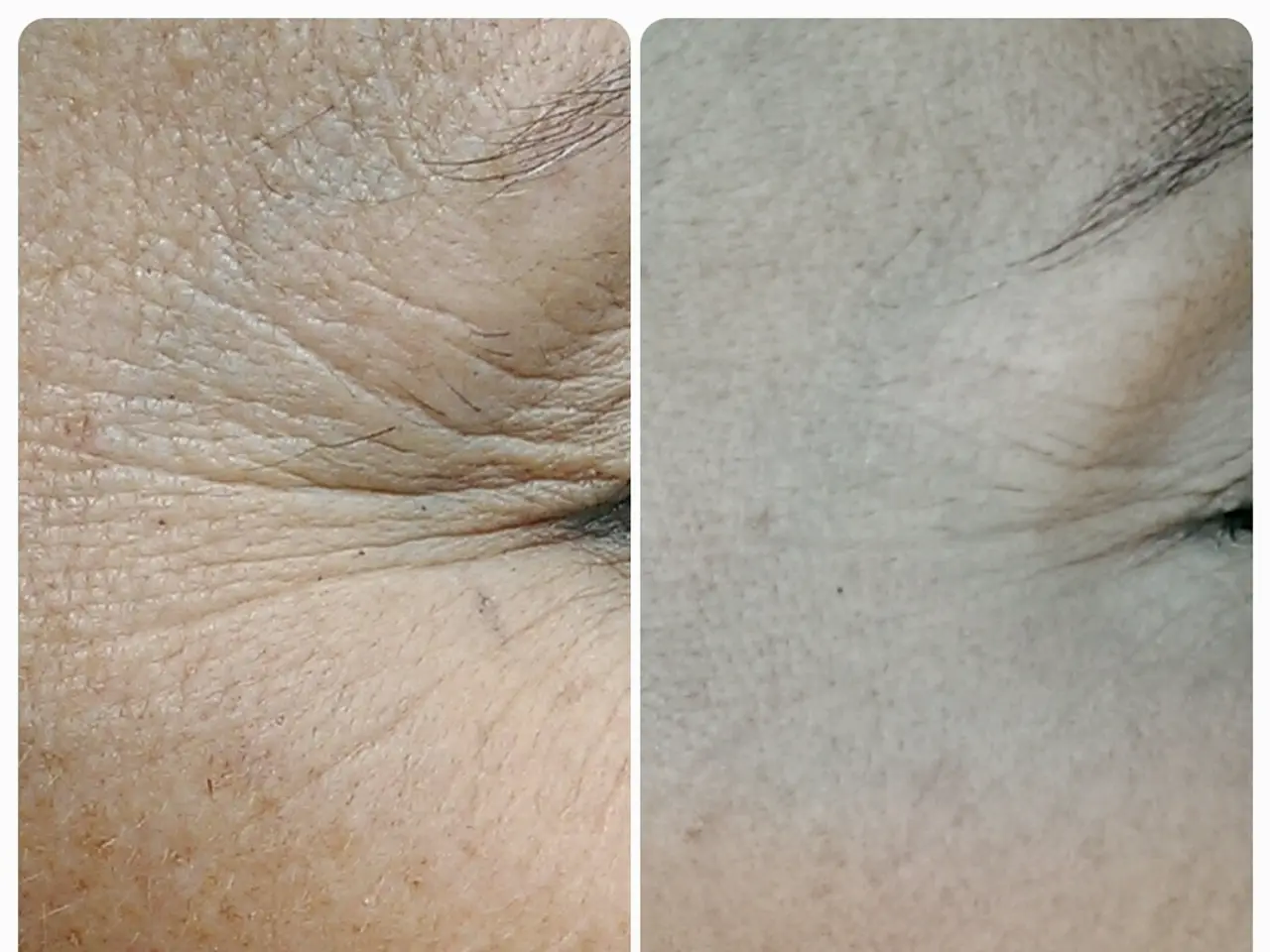Rosacea and Eczema: A Comparative Analysis of Symptoms, Root Causes, Therapies, and Frequently Asked Questions
Rosacea and eczema are two common chronic skin conditions that share some symptoms but have distinct causes, presentations, and treatments. Both conditions can cause significant discomfort and affect a person's quality of life, but proper understanding and management can help alleviate symptoms.
Symptoms
Rosacea
Rosacea typically appears on the central face, including the cheeks, nose, forehead, and chin, with persistent redness, flushing, visible small blood vessels, and pimple-like bumps (papules/pustules). It often causes a burning or stinging sensation and a feeling of heat or tightness.
Eczema
Eczema can appear anywhere on the body, especially in joint creases (elbows, knees), hands, neck, and face. Its hallmarks are intense itching (pruritus), dry, scaly, or thickened skin, red to brownish-gray patches, and small bumps that may crack, ooze, and crust over.
Causes
Rosacea
Rosacea involves a chronic inflammatory response with contributions from neurovascular dysregulation, an overactive immune system, and genetic factors. The exact cause is unknown, but skin-environment interactions and imbalances in skin microorganisms (like Demodex mites and bacteria such as Staphylococcus epidermidis) play key roles.
Eczema
Eczema is linked to genetic predisposition, a compromised skin barrier, and immune dysregulation. Environmental factors and allergens often trigger flare-ups. It usually begins in infancy or early childhood, though it can develop at any age.
Treatments
Rosacea
Treatment for rosacea focuses on reducing inflammation and calming redness. Common approaches include topical medications such as metronidazole, azelaic acid, and ivermectin. Oral antibiotics like doxycycline and minocycline may be prescribed for more severe cases. New options like minocycline 1.5% foam (Zilxi) are also available. Procedural therapies such as laser and intense pulsed light (IPL) treatments targeting visible blood vessels can also be beneficial. Avoidance of triggers (sun exposure, spicy foods, alcohol, stress) is essential, and using gentle, rosacea-friendly skincare products is recommended. Corticosteroid creams must be used cautiously as some types can aggravate rosacea or cause complications.
Eczema
Eczema treatment is centered on restoring the skin barrier and reducing itching and inflammation. This typically involves regular use of emollients (moisturizers) to hydrate and repair skin, topical corticosteroids or other anti-inflammatory agents to control flare-ups, and avoiding irritants and allergens. In moderate to severe cases, systemic treatments or phototherapy may be necessary.
Given the differences, professional medical diagnosis is essential for proper treatment planning since self-diagnosis or misdiagnosis can worsen symptoms.
In summary:
| Aspect | Rosacea | Eczema | |--------------------------|------------------------------------------------------|---------------------------------------------------| | Location | Central face (cheeks, nose, forehead, chin) | Anywhere (commonly joints, hands, neck, face) | | Symptoms | Persistent redness, flushing, burning/stinging, papules/pustules | Itching, dry/scaly patches, cracking, oozing bumps | | Causes | Immune dysregulation, neurovascular issues, microbes (Demodex, bacteria) | Genetic predisposition, skin barrier dysfunction, immune system issues | | Typical Age of Onset | Usually after age 30 | Often infancy or childhood but any age possible | | Treatment | Topical & oral antibiotics, laser/light therapy, trigger avoidance, careful skincare | Emollients, topical corticosteroids, allergen avoidance, skin barrier repair |
This comparison highlights the chronic inflammatory nature of both but distinct pathophysiology, clinical presentation, and management strategies.
While both rosacea and eczema are entities in the realm of medical-conditions related to health-and-wellness and skin-care, they display unique characteristics. Rosacea primarily presents on the central face with persistent redness, flushing, and pimple-like bumps, accompanied by a burning or stinging sensation (hst). Eczema, on the other hand, appears anywhere on the body, including joint creases and the face, with symptoms such as intense itching, dry, scaly, or thickened skin, and small bumps that may crack, ooze, and crust over (ad).
Rosacea is associated with immune dysregulation, neurovascular issues, and microorganisms like Demodex mites and bacteria such as Staphylococcus epidermidis (science). In contrast, eczema is linked to genetic predisposition, compromised skin barrier, and immune dysregulation, often triggered by environmental factors and allergens.
Treatment for rosacea focuses on reducing inflammation and calming redness, whereas eczema treatment is centered on restoring the skin barrier and reducing itching and inflammation. Proper understanding, management, and professional medical diagnosis are crucial for proper treatment planning and alleviating symptoms, as misdiagnosis can worsen conditions.




